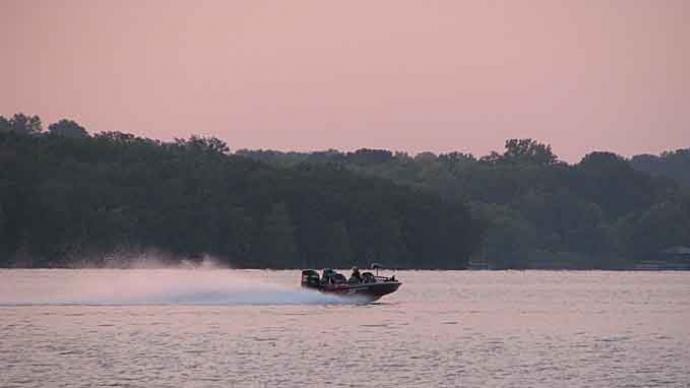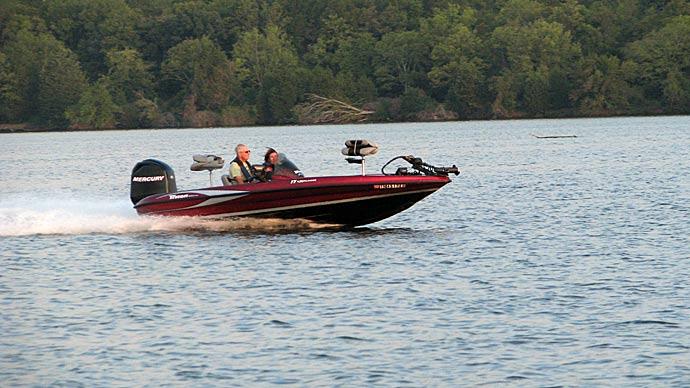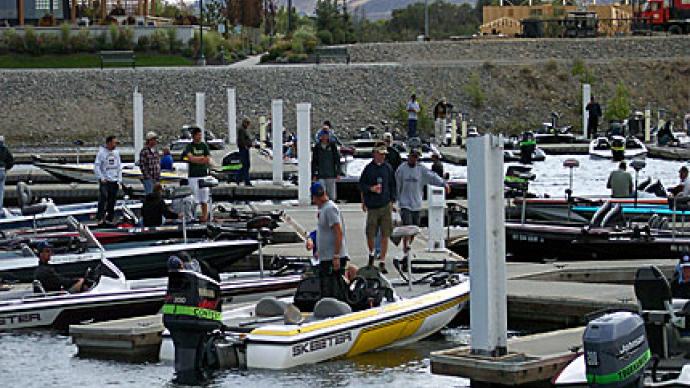| PROPELLER MANUFACTURERS |
|
This is not an all-inclusive list, however, it provides access to some of the more popular prop manufacturers' offerings. Composite Marine Propellers Inc Mercury Marine Piranha Propellers Power Tech Propellers Propco Propellers Yamaha USA |
There are literally dozens of trick modifications and add-ons you can purchase for your boat to improve its speed and handling. These can range from exotic porting and internal engine modifications to simply moving your engine up one more notch on the jack plate. However, all the horsepower in the world is worthless unless you can make it connect with the water. This is where the propeller becomes a critical part in the overall performance-equation.
An incorrectly-sized or mismatched propeller can rob you of speed, reduce the overall life span of your motor, and possibly create a dangerous handling situation. So, before you head out and spend your hard-earned cash on a new prop, there are a few things you should know to make sure the choice you are making is the correct one.
Prop Numbering
Boat propellers are identified by a set of numbers that denote prop diameter and pitch (DxP). The diameter of the prop indicates the outermost circle the prop draws in the water as it turns. The pitch, on the other hand, denotes the distance the prop will travel in one rotation. Typical prop diameters for most engines in the 150-250 horse power range will be from 13-3/4 inches to 16 inches depending upon the material from which the prop is constructed. Likewise, typical pitch will run anywhere from 15 inches to 27 inches depending upon the use of the boat.
Construction Materials
Props can be constructed from a variety of metals and composites. The most commonly found prop materials are aluminum alloys, stainless steel, and composites. Each of these has its own advantages and disadvantages.
The most commonly used material in prop manufacturing is aluminum. Aluminum props are affordable, starting from around 100 to 200 dollars, and they can be easily and economically repaired if the prop is damaged. Most stock boat packages include an aluminum prop.
Aluminum does have some drawbacks though. The hardness of the aluminum alloy used allows for the blades to flex slightly in high-horsepower and heavy-load applications. Aluminum is also more susceptible to damage than composites or Stainless steel.
Stainless steel props offer some advantages over aluminum, but come at a higher price - around 300 dollars or more. The positive attributes of stainless props include minimal flex under load, and more durability. The strength of stainless steel over aluminum allows manufacturers to make thinner prop blades, resulting in better performance over an aluminum prop of the same pitch. The downside to stainless steel is its cost, which runs almost twice that of aluminum. Also, the increased expense of fixing a dinged stainless prop could make the most intrepid boater break out in a string of expletives that would make a sailor blush.
Composite props have made an impact on the market in recent years. After some mixed results, they are finally gaining respectability. Probably the best composite prop system currently offered comes from Piranha Propellers (800-235-7767). The unique aspect of this composite propeller is its ability to replace individual blades. The center hub is made of a high strength extruded aluminum over-molded with Verton® nylon. Different pitched blades can then be inserted on the hub to achieve the desired performance levels. Should you ding a blade, simply replace it on the spot instead of changing out the entire prop. The nylon and carbon fiber composite material used in manufacturing offers the strength of aluminum at a comparable price.
Prop Blades - 3 vs. 4
Some props have 3 or 4 blades. Why? The truth is that the optimal prop in terms of eliminating slippage would be one that has a single blade. Unfortunately, this would not be practical from engineering or manufacturing standpoints. As a general rule, a 3-bladed prop is efficient enough for most normal recreational activities. However, as you increase pitch, a 3-bladed prop starts to lose surface area which contacts the water, resulting in higher RPMs and lost efficiency. The inclusion of a 4th blade as the pitch increases adds to the amount of surface area coming in contact with the water.
Propeller Styles
There are three basic styles of propellers, choppers, cleavers, and round ears. Round Ear propellers are the standard for most of the boating industry. They are the best choice for nearly all fishing, skiing, and general boating applications. Odds are good that unless you have a boat capable of running over 80 miles-per-hour, you are running a round ear prop. Carefully assess your needs before pursuing choppers, or cleavers.
Basic Prop Selection

Everyone would love to own a vehicle that held as many people as a Chevy Suburban, handled like a Corvette, got the gas mileage of a Geo Metro, and had the insurance payment of a '66 Impala. Facts are, no such beast exists. As a boat owner, you are faced with a similar predicament. If you want maximum speed, you can do so but at the expense of a poor hole shot. Conversely, if you want your rig to get on pad quickly, you will likely have to sacrifice top end speed. We all have to compromise.
There are myriad variables that go into selecting the correct propeller for your rig. When going to your dealer, have information such as your motors recommended engine RPM operating range at wide open throttle.
Other items such as the size, weight, and type of boat, diameter and pitch of your current propeller, year, make and horsepower of your outboard, and boating application (skiing, fishing) will all factor into selecting the optimal prop for your boat/engine combination.
The easiest way to help dial in the right prop for your boat is to determine the recommended RPM at Wide Open Throttle (W.O.T.) as denoted in your motor owner's manual. The maximum horsepower achieved at a certain RPM level represents the W.O.T.
Go to the lake and determine the maximum operating RPM for your boat by making several optimally trimmed-out runs at WO.T. You will need to have a normal weight distribution, passenger, and gear load to get a correct reading for usage under normal circumstances. Of course, having a working tachometer will be a necessity in making this determination.
With both figures in hand, compare your recommended W.O.T. RPM reading against your actual WO.T. RPM readings that you derived from your test runs. If your actual reading is running below what your owners manual dictates, you will need to reduce the pitch of your prop. The general guideline is for every 1 inch of prop pitch you reduce, you will gain 200 RPM. So, as an example, if your recommended W.O.T. is 6000 RPM but your boat is only pulling 5600 RPM with a 22-inch pitch prop, you should decrease the pitch of your prop to a 19-incher to bump your RPMs to the desired 6000 level.
Conversely, if your recommended WO.T. is 6000 RPM and you are actually pulling 6400 RPMs when running, you should increase the pitch of your prop by 2 inches to lower the RPMs back to the desired level. Remember not to exceed redline when testing. If you can easily hit the tachometers redline with more power to spare, this is an obvious sign that you need to increase the pitch of your propeller.
These are of course rough guidelines. Mind you, not everyone pegs their throttle at the stop every time they are running the boat. However, this is the best way to determine the optimal prop for every range of RPM. Additionally, other variables such as hull design, jack plate height, weight distribution, and operating conditions all enter into the equation when choosing a prop. Almost every dealer offers demo props to test before you actually make a purchase. It is a good idea to take advantage of these programs to experience the differing levels of performance that various props offer. Demos can help prevent the costly mistake of purchasing a prop blind.
Many boaters who also use their bass boat for family outings may wish to carry two props; one with a higher pitch for fishing and higher top end, and one with a lower pitch for a better hole-shot when pulling skiers or inner tubes. Lots of anglers I know carry a spare prop on board with a slightly different pitch for exactly these situations.
Props play a significant part in the overall performance of your vessel. However, there are dozens of other variables that can affect the speed, handling, and stability of your boat. Consult your boat dealer or marine specialty shop for the best advice on the optimal prop for your motor/hull combination. Further detailed information on props can he obtained from Mercury Marine by requesting a booklet entitled "Everything you need to know about propellers" (Item #90-86144-92).
Reprinted with permission from Bass West Magazine




